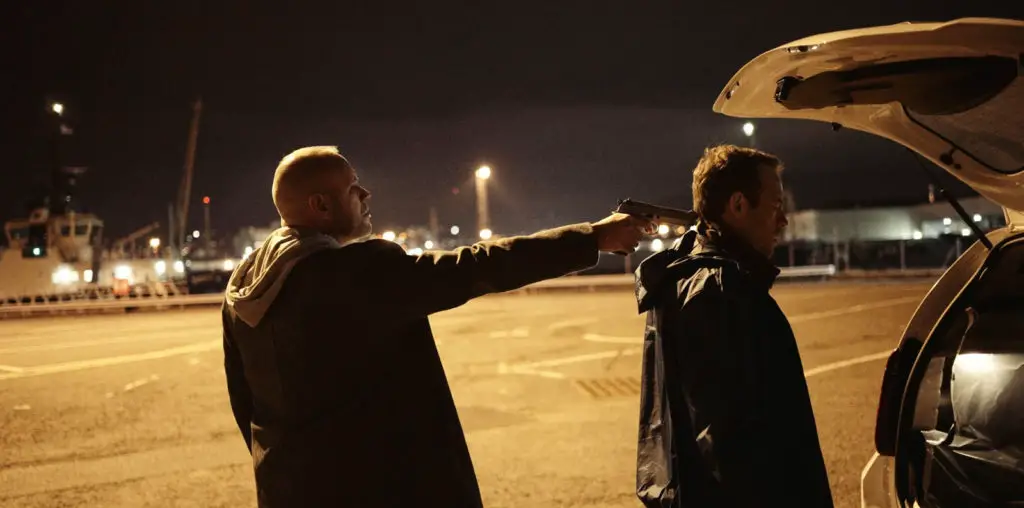
Okay, I admit it. I screwed up.
I approached “Shadow of The Vampire” under the wrong circumstances. I suspected it was a clever gothic allegory of Hollywood — of tyrannical directors, and actors who take “the method” to extreme levels. It’s also a film I never considered an “authentic” vampire movie; rather, a speculative hunch on the creation of F.W. Murnau’s 1922 silent film landmark “Nosferatu.” An experiment regarded as history’s first vampire flick, with German actor Max Shreck as the title bloodsucker. It was later renamed “Count Orlock” (versus “Dracula”) for legal reasons.
But again, I was wrong — at least in part — about these conditions. “Shadow of The Vampire” is all of these things. But it’s also much more: a rich, strange, brilliant, and beautifully postmodern concept. One such concept is posed around “unexplained” details of Murnau’s actual production of “Nosferatu” which, reportedly, included the disappearance of a makeup girl and other whispered tales. All incidents that are, in truth, no doubt mundane — ten deutchmarks says the girl eloped — but with the proper inspiration, can be turned into keen fantasy on the relationship between F.W. Murnau and Max Schreck, who are here played respectively by John Malkovich and Willem Dafoe.
Right off, on location in Europe, Murnau’s star makes quite the impression: hunched and ratlike, dressed in black, Schreck’s bony fingers folded in consideration. Murnau also makes it known to his crew that Schreck must be addressed only in character. And then, only when necessary. Yet Max’s contract carries further stipulations; namely, that he only work nights, never travel by boat, and that he be afforded certain items (blood) to help him immerse himself in character.
Later, and with delicious predictability, strange incidents occur on the set of “Nosferatu”: Murnau’s photographer falls “ill,” crew members turn up dead, etc. But most of this creepy action is played to a comic edge, with Shreck trying to provide good performances on camera. But he constantly upsets production by, among other habits, sucking on cut fingers of co-stars and eating live bats. All events lead to speculation that Murnau may have struck a Faustian deal with his star, granting Shreck “everlasting life” on film, plus his leading lady to boot, in exchange for his uncanny performance.
As for Malkovich, well, he certainly does what he does best here: playing the edgy, intense genius driven to finish his masterpiece. But in Murnau — and via an excellent script by Stephen Katz — he also proposes a Machiavellian tyrant and morphine addict who indulges in bizarre vices off-set. Or so it’s hinted at here. Yet it’s Dafoe’s performance as Shreck that’s the true marvel of “Vampire”. Here, he renders a dark, quirky performance that’s nothing short of amazing. But in all honesty, to comment further on what Dafoe creates on-screen couldn’t possibly do his achievement justice. It’s that mesmerizing. Instead, my best recommendation is simply to see Dafoe’s brilliant portrayal of Schreck for oneself.
For the record, “Vampire” also co-stars Catherine McCormack (“Braveheart”) as Murnau’s bitchy female lead, and Carey Elwes (“The Princess Bride”) as his unlucky backup photographer.
On a technical level, it cannot be emphasized how much, and well, Director Elias Merghe did his homework prior to approaching “Vampire.” He simply excels at capturing the technological spirit (and elements) of early film, suturing into his effort classic touches of the German expressionist style — a school co-founded by Murnau and countryman Robert Wiene (“The Cabinet of Dr. Caligari”). But thankfully, Merghe also shows far more respect, and restraint, in this stylistic borrowing, stopping far short of the vulgar lengths Francis Ford Coppolla applied in his 1992 “Dracula.”
Originally titled “Burned To Light,” “Vampire” has been postponed three times to its current slot of December 22, 2000. This, to most likely attract Oscar buzz for Malkovich and, most deservedly, Willem Dafoe. Here, Dafoe might catch a nomination for Best Actor. But sadly, the odds of a win are slim, as the Academy is not renowned for rewarding creative risk, having recently fallen into doting on “safer” movies (“American Beauty”) like a favorite daughter home from school.
Whatever the case — and screw the awards — “Shadow of The Vampire” impresses on most every conceivable level: as a pure film, as wild, speculative storytelling, and, like Murnau’s own “Nosferatu,” a benchmark ranking among the most ingenious vampire movies ever crafted.
